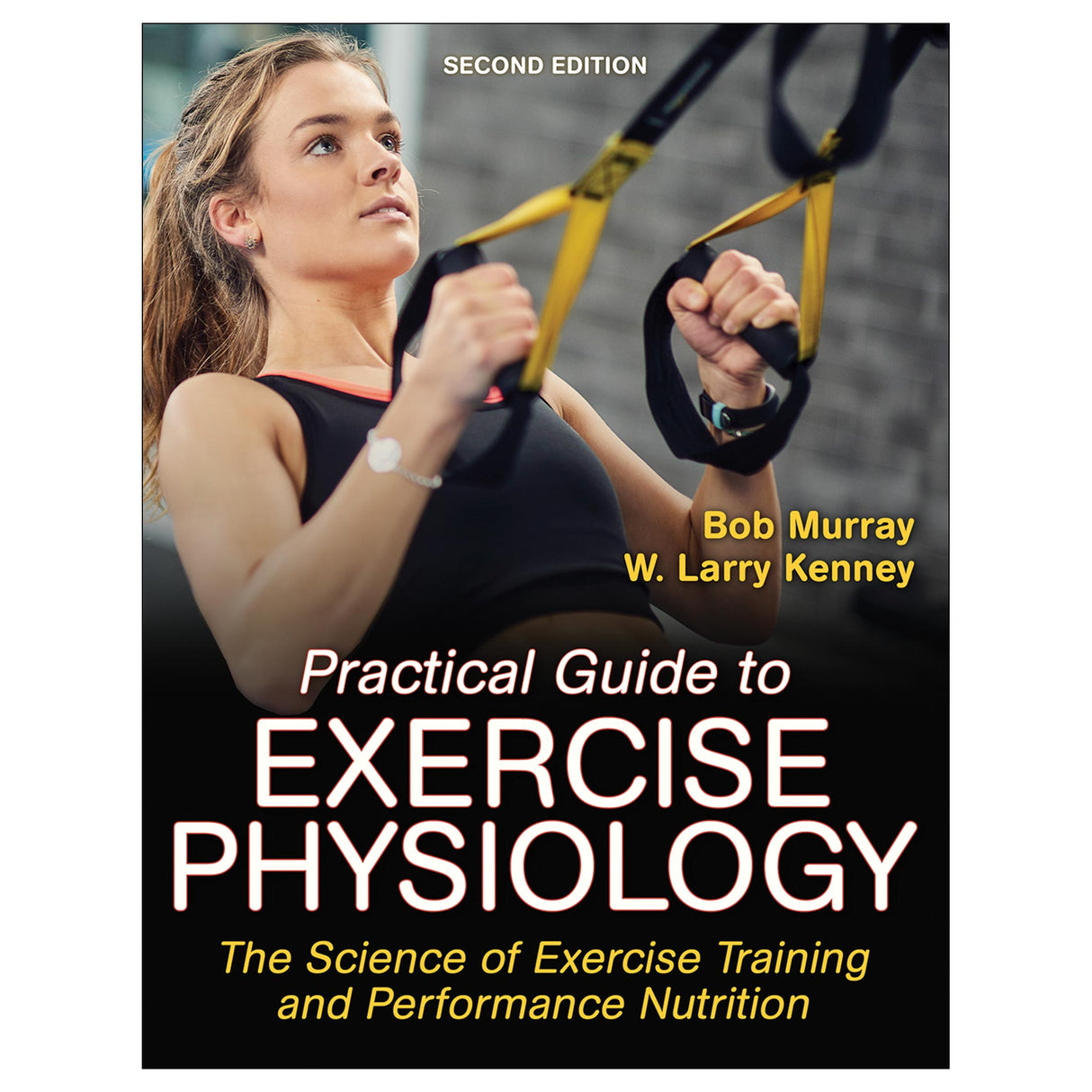Practical Guide to Exercise Physiology 2nd Edition epub
The Science of Exercise Training and Performance Nutrition
Author: Robert Murray, W. Larry Kenney
$75.95 CAD
Access Duration: 10 Years
Intricate physiological processes responsible for how the body responds and adapts to physical activity are described in an accessible manner so that readers can easily select appropriate training programs and explain them to others. Practical Guide to Exercise Physiology, Second Edition, is complemented by medical artwork that puts these complex systems into a digestible visual context. These systems are then applied to real-world practice and training principles that are beneficial to specific body systems to achieve the desired results.
Part I of Practical Guide to Exercise Physiology, Second Edition, reviews human physiology fundamentals, including muscles and muscle adaptation, bioenergetics, and the cardiorespiratory system. Part II applies these scientific concepts to training programs designed for specific fitness goals. These goals include weight loss and improvements in strength and muscle mass, speed and power, and aerobic endurance. Part III of the text outlines special considerations for training with pregnant women and children as well as older adults. This part also includes exercise adjustments for changes in temperature and altitude.
The second edition of Practical Guide to Exercise Physiology features new content on trending fitness concepts such as HIIT, periodization, and detraining. The text also provides several useful tools for practical application:
- Fun facts and sidebars examine current topics and engage readers with additional content about the human body’s response to training.
- At the end of each chapter, summary statements and review questions highlight essential information.
- Performance Nutrition Spotlights offer advice and tips on using nutrition to support adaptations and improve performance.
- The Index of Common Questions From Clients section collects the most common inquiries from clients and points to the corresponding chapter where each of those topics is covered, helping readers to quickly access the information.
Earn continuing education credits/units! A continuing education exam that uses this book is also available. It may be purchased separately or as part of a package that includes both the book and exam.
Audience
Textbook for introductory exercise physiology courses at the community and junior college level; reference for personal trainers and health and fitness professionals working with clients.Chapter 1. Muscles Move Us
How Do Muscles Work?
How Do Muscles Adapt to Training?
How Do Muscle Cells Get Bigger and Stronger?
Chapter 2. Food Really Is Fuel
From Food to Energy
How Do Nutrients Fuel Muscle?
What About Vitamins and Minerals?
Water Is a Nutrient, Too
Chapter 3. Muscles Need Oxygen
How Does Oxygen Get to Muscles?
How Does Oxygen Use Relate to Metabolic Rate?
How Does Training Help the Body Use More Oxygen?
Oxygen Delivery and Performance Enhancement
Chapter 4. Fatigue: What Is It Good For?
What Causes Fatigue?
What’s the Difference Between Fatigue and Overtraining?
What Role Does Fatigue Play in Adaptations to Training?
Part II. The Science of Training Program Design
Chapter 5. Principles of Designing Training Programs
What Are the Basics of Program Design?
What Makes an Effective Training Program?
Training Terms
Chapter 6. Training to Improve Strength and Muscle Mass
How Do Strength and Mass Increase?
What’s the Best Way to Gain Strength and Mass?
What’s the Role of Nutrition?
Detraining and Retraining
Chapter 7. Training for Body Weight Control
Weight Loss Is All About Energy Balance
Why Do Some People Have Difficulty Losing Weight?
What’s the Best Way to Lose Fat but Protect Muscle Mass?
Chapter 8. Training for Speed and Power
What Are Speed and Power?
What Adaptations Are Needed to Improve Speed and Power?
What Kinds of Training Improve Speed and Power?
What Does a Speed and Power Training Session Look Like?
Chapter 9. Training for Aerobic Endurance
What Are the Main Adaptations to Aerobic Training?
What’s the Best Way to Improve Aerobic Endurance?
Should Endurance Athletes Engage in Strength Training?
Why Is Endurance Capacity Important for Sprinters and Team-Sport Athletes?
Part III. Special Considerations
Chapter 10. Heat, Cold, and Altitude
Exercise in the Heat Impairs Performance
Cold Stress Chills Performance
Exercise at Altitude
Chapter 11. Training Children and Pregnant Women
Do Children Respond Differently to Exercise Training?
Can Children Improve Strength With Training?
Should Women Exercise During Pregnancy?
Chapter 12. Training Older Adults
What Changes With Aging?
How Can Exercise Training Benefit Older Adults?
What Considerations Should Be Part of Training for Older Adults?
Index of Common Questions From Clients
How can exercise training benefit older adults?
Should endurance athletes engage in strength training?
What is periodized nutrition?



Instructor guide. Includes sample syllabuses, chapter objectives, chapter summaries, lecture aids, essay topics, tips, and answers to the review questions from the book.
Test package. Contains 15 to 20 questions per chapter in true-false, fill-in-the-blank, and multiple-choice formats.
Image bank. Includes most of the figures and tables from the text, sorted by chapter. These can be used in developing a customized presentation based on specific course requirements.





